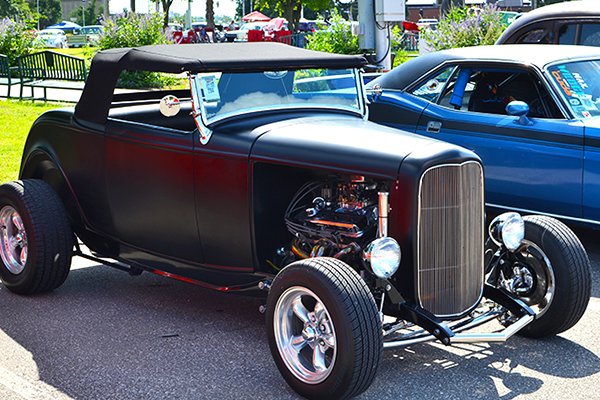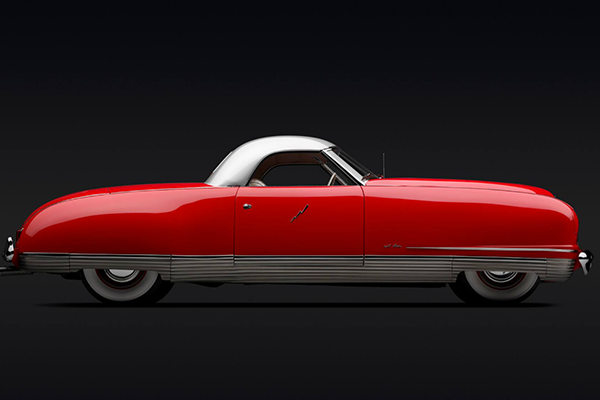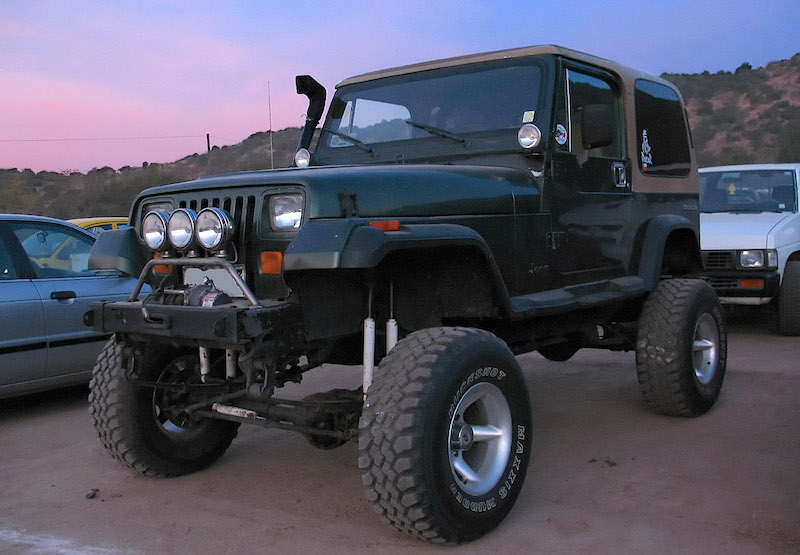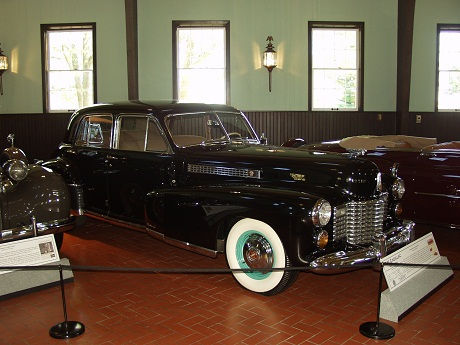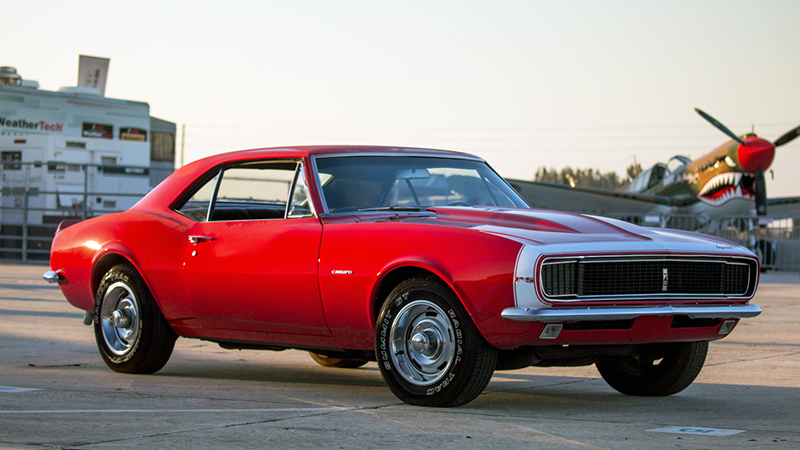New cars might have all the bells, whistles and state-of-the-art features, but they become last year's model all too soon. A nicely restored vintage car, however, just gets better with age. But not all cars are worth restoring, either because there are zero OEM or aftermarket parts available or the cars are money pits that may never appreciate in value. Meanwhile, some cars have already seen a boom in interest and restoration, with prices to match, making pristine models that rarely left someone's grandmother's garage difficult to acquire at a reasonable price.
We spoke with several owners and restoration experts to find a mix of popular esoteric cars and trucks that are not only fun and easily restorable, but are also good investments if you ever want to trade up or sell them. Even long-gone makes like Hudson, Packard or Studebaker have enthusiast communities that can help hook you up with parts as needed. And, thanks to the internet, parts availability for cars like these are actually better than they were 20 years ago.
Keep In Mind
Bring a magnet to check for rust, look for cars with original paint when possible and have a master plan. “You really want to make sure you know where you want to end up before you start," says Jonathan Ward of Icon and TLC. He is the Los Angeles-based automakers of high-end, one-of-a-kind resto-mods. “If you're planning to restore a 1966 Mustang, or whatever that's gotten under your skin, and want to restore it to original, then buying a car with as many of the original parts intact is very important, whereas if you want to do a resto-mod with a more modern engine and other conveniences, then buying a car that has no engine isn't as much of a problem."
When it comes to rust, body rust and floor pans can be addressed if the rust is not too severe. Frame rust, however, is almost always going to be a big deal breaker. As for body parts, things like grilles, headlight bezels, door handles, trunk valances and even doors and fenders are being manufactured by small companies for really popular models like Mustangs, Dodge Chargers and Corvettes.
Cars worth sinking your heart, sweat and wallet into

Red Volvo P1800 | Badzil
Volvo P1800
Anyone who remembers the late Roger Moore in "The Saint" will recognize the P1800 coupe, which was produced from 1961 to 1973. And the P1800 ES wagon looks like something that fell off the set of an Ingmar Bergman movie starring Liv Ullmann. “The 1800 coupes or the 1800 ES two-door wagon are supercool," says Ward. “And Volvo is just wonderful about their parts support." They're also likely to last a long time, as proven by the 3-million-mile milestone that Long Island-native Irv Gordon achieved in 2013 with his P1800, which he originally bought as a new car in 1966 when he was 24.
Yes, the '70s- and '80s-era 240 Series sedans and wagons are certainly beloved by hipsters, but this thing will turn more heads, is auto-show worthy and is likely continue to appreciate in value. You can find decent used fixer-uppers for as little as $6,000. Pristine, low-mileage models have been known to sell for as much as $92,000, so you can be sure that a nicely restored and well-maintained model will continue to appreciate in value. Just watch for rust, especially if it's a car from the Northeast or upper Midwest.

Orange VW Type 2 | RobertG
VW Type 2
Beloved by families, hippies and surfers — it was featured both on the cover of Bob Dylan's 1963 album "The Freewheelin'" and was Jeff Spicoli's drive in 1982's "Fast Times at Ridgemont High." The VW Bus, Kombi, Transporter (to drop a few of its nicknames) was built from 1949 onward in various incarnations and for different markets up until December 2013. Perhaps the most famous and iconic are those built from 1948-1979, but even the newer Vanagon models are getting some interest. There are camper models and standard family models, with the former being a bit more challenging to restore given the various outdoorsy features like mattresses, cushions, canvas and screens.
“The camper ones seem to be more appealing to people and have a higher value," says Ben Jamin (a pseudonym), whose YouTube series "Kombi Life" chronicles his adventures restoring and maintaining a VW Kombi he purchased in Argentina and drove over the course of four years to Alaska. “But mildew and mold can be an issue with those." The good news is that parts, even factory-made ones, are plentiful. Even after they were discontinued in the U.S. and Europe around the turn of the millennium, the microbus — or Kombi, as it's known internationally — continued to be manufactured in Mexico and Brazil for Latin American markets until 2013.
“Whatever the job, there is a plethora of different people who have posted their experiences around it," says Jamin, referencing sites such as TheSamba.com, an online VW forum, GoWesty and JustKampers, which publishes their own tutorials. “When you buy a bus, you're buying into a family and community," says Jamin, who was offered everything from hospitality and repair advice to roadside assistance during his four-year drive between the Southern and Northern hemispheres. “If you break down on the side of the road, you are guaranteed that someone will stop by and help you."

Silver Blue Ford Mustang | Bill McChesney/Flickr
Ford Mustang
The Ford Mustang is synonymous with American muscle cars and may well be the first car that comes to mind when you think of classic car restoration. And there's a good reason for that. The 1965-1970 models are the most iconic in some ways. They're the first Mustang models and were sold by the hundreds of thousands. For really beat-up or rusted models, you can buy entire sheet bodies or interiors from various vendors.
Even later models like the “Fox Body" cars from 1979-1991 are great for restorations both traditional and hot-rod (they were built on a popular cross-company Ford platform, so all kinds of aftermarket parts are available). “All the expertise online and all the available books to help you makes your life a hell of a lot easier, too," adds Ward. If you're more of a Chevy person than a Ford person, 1967-1969 Camaros are just as easy to restore, thanks to a similar wide availability of parts, bodies and interiors.

Blue and White Chevy Cheyenne | Sicnag/Flickr
Chevy Cheyenne 1970-1972
The second generation of GM's popular C/K pickup truck line features a distinctive version known as the Cheyenne, which offered two tones on the outside, power steering, power windows, power brakes and automatic transmission. “It was the highest trim package available," says Ward. “They're really cool and groovy and vintage and have great color and interior design, with fake Cheyenne tooled-leather look stamped into the vinyl." With all those included features, this truck can more than handle itself on modern roads.
You can still find a Cheyenne for less than $10,000, but pristine models are fetching up to $85,000 (no surprise, considering that GM updated its C/K design in 1973), making it a good investment in addition to a fun model to restore. If you can't find a Cheyenne at a price you like, you can also look for the GMC Sierra Grande, which was the GMC version of the pickup trim. Just watch for rust at the base of the tailgate, above the rear wheels and at the bottoms of the front fenders and kick panels.

Green Mercedes W123 | SuperTank17
Mercedes W123
With a nearly 3,700-pound curb weight in its sedan model — much of it in the steel body — the W123, particularly in its diesel variety, is widely considered the last cost-no-object, highly engineered car built by Mercedes when the designers and technicians had more of a say than accountants and marketing departments. “These things are built like tanks," says Ward of the midsize executive car (equivalent to today's E-Series). With almost 2.7 million built during its decade of existence from 1975-1985 and a massive fan base across the globe, parts are easy to find and widely available. The diesel engines get better with more miles, and many are known to run to 500,000 miles or more.
Although the sedans and coupes are the ones you see on the roads the most, the TD wagons, which were released from 1981-1986, are the most coveted and likely to rise in value if you can get one that's in good shape. Things to look out for include rust, semi-working electronics and instrument clusters, leaky windows and sunroofs, but if you have a solid body and engine, everything else can more or less be easily replaced.

Datsun 240Z/260Z/280Z
It's hard to believe this car with its sleek and sexy looks — designed by Kumeo Tamura and Pininfarina — was only around $3,000 (about $20,000 today) when it first debuted in 1968, but that's what made it the poor man's Jaguar E-Type. Today, the 240Z is quickly ratcheting up in price in the collectibles market, but you can still find the occasional restoration-ready bargain for less than $10,000. Datsun made more than 150,000 of these, so parts are plentiful. “They have a wonderful subculture of support," says Ward, “especially if you hit up the online forums." That said, be on the lookout for significant rust or patching, especially around the rear dog leg, as replacing the body can be hard and costly. Ditto with any rubber around window seals or bumpers.
“Asian vehicles are interesting in that if they require a part that is not naturally native to Japan, that part is going to be expensive," says Ward. “Since Japan has no indigenous rubber trees, Japanese manufacturers back in the day had standards that if they were going to have to import rubber, it was going to be the best rubber. So the main-door weather stripping on a Mustang door seal is going to cost $28, but the same seal on, say, a Toyota Land Cruiser is $130." The 240Z is already becoming rarefied enough that it's getting expensive, but the good news is that you can find plenty of affordable examples of the similar-looking 260Z (1974-1978) and the 280Z (1978-1983), which keep the Albrecht Goertz-inspired sporty body and rounded bulbous instrument panel of the first-generation 240Z.

Deep Blue Jeep Grand Wagoneer | CZmarlin
Jeep Grand Wagoneer
Move over, Range Rover. If you want a classic, luxury SUV with military-grade 4x4 capability that will continue to appreciate, the Jeep Grand Wagoneer might be the best example. After years of developing 4x4s that looked the rugged, off-road part, Jeep realized that it needed to compete with the wood-paneled station wagons overtaking America in the 1950s. So in 1963 it released its first Jeep Grand Wagoneer, and the design pretty much stayed the same until the model was discontinued by Chrysler in 1991.
This proto-luxury SUV's never-changing design was part of its enduring appeal to affluent suburban families. “We are blessed to be able to still get our hands on nearly every part that goes under the hood over the counter without having to do a special order or manufacture something," says Chip Miller who runs Wagonmaster, a Texas restoration shop dedicated exclusively to buying and restoring Jeep Grand Wagoneers, some of which have sold for more than $74,000. The good news is that you can still find models for under $10,000, but be prepared to work on these. Miller says three things crop up in most Wagoneers, the carburetor being one of the biggest ones. If you don't mind maintaining one every six months or so, then there's no need to worry, but Miller's restorations are updated with simple throttle-body, GM-type fuel-injection systems by Howell that are more reliable and emissions-compliant.
Miller also notes that oil leaks from the rear main seal and failures with the rear tailgate window, which needs to be down in order for the back door to open, can be recurring issues. If you can handle those types of projects, this is the perfect mix of classic, rugged and luxurious. “Most people really enjoy the ride on these things," says Miller. “They're like a big Cadillac, and when you need a four-wheel drive or want to go off-road or in deep snow, these things are unbelievable."
As always, Advance Auto Parts carries tons of parts to help you restore your classic.
Have a car you've lovingly restored? Tell us your story in the comments.
